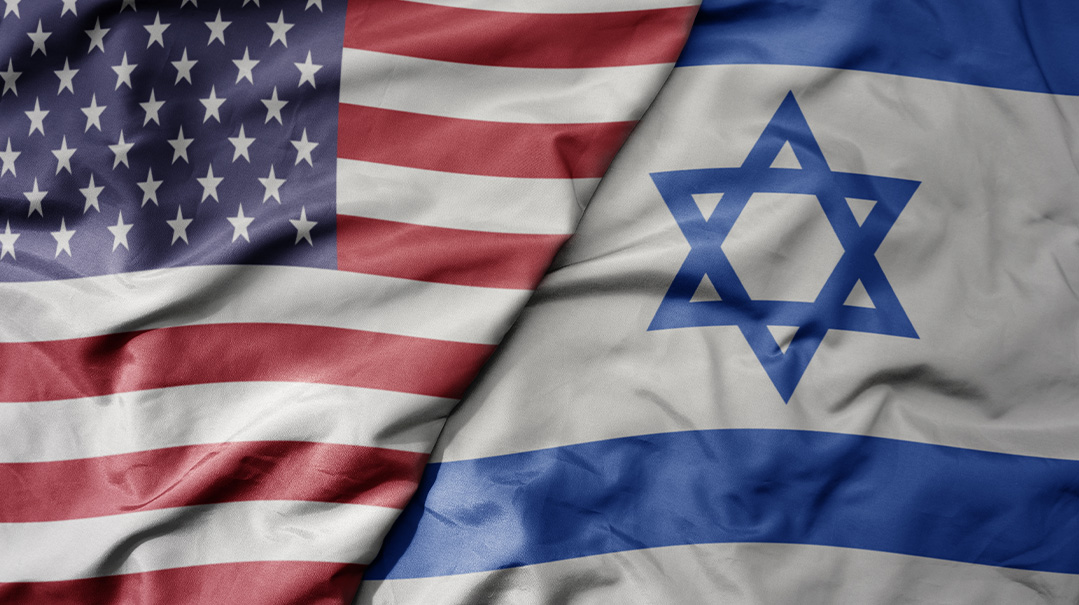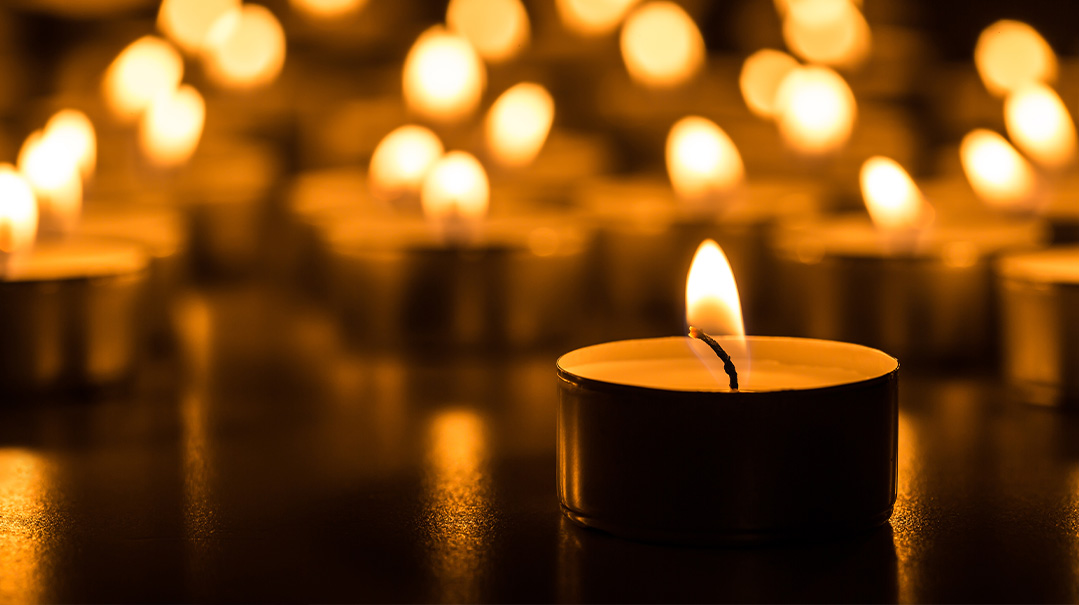Reform’s Last Gasp

Making a religion less demanding decreases both its meaningfulness and its attraction
At the end of a recent Zoom presentation on Israel’s chareidi community to the Chicago Jewish Federation, the question was asked: Whom do you define as a Jew?
That question comes up every time one addresses a mainstream group of older Jews. Behind it lies another question, sometimes stated explicitly and sometimes not, but the pain of which is never far from the surface: Are you telling me that after a lifetime of contributions to the Federation, of support for Israel, that my grandchildren are not Jewish?
I always try to acknowledge that pain before explaining why, even if it were in my power — which it most certainly is not — I would oppose any change to the halachic definition of a Jew as one born to a Jewish mother or converted according to halachah. The implicit message of all attempts to hold all those descended from Jews within the fold by definitional legerdemain or minimal standards for conversion is: Whatever you do, no matter how far you, or your father strayed, you’ll always be one of us. And the effect of that message can only be to further trivialize Judaism and decrease its significance in the eyes of those who are halachically Jewish.
Subsequent to that presentation, I found confirmation for my thesis that making a religion less demanding decreases both its meaningfulness and its attraction in two powerful articles. The first, by Yuval Levin, “The Case for Wooden Pews,” contemplates the plummeting attachment to traditional religious institutions in America, even as the percentage of Americans who describe themselves as “highly religious” remains the same.
The common response to the loss of membership in religious institutions is “to emphasize commitments to justice and to deemphasize specific strictures on personal behavior,” to make religion more consonant with “a culture of choice and self-expression.” But that approach, writes Levin, fails to understand what people seek in religion: “Religious institutions need to show not that they are continuous with the larger culture but that they are capable of addressing its deficiencies — that they can speak with legitimate authority and be counted on to do the work of molding souls and shaping character.”
That is why “observers of modern democracy since Alexis de Tocqueville have noted that in free societies it is precisely the moral and religious institutions that hold firm to orthodoxy and not those that seek modernization and accommodation which have proven most attractive — thanks in no small part to their countercultural character.” In that vein, a Pew Research study conducted nearly a decade ago found 110,000 American Jews identifying as Orthodox who were not raised in Orthodox homes.
Both progressives on the Left and libertarians on the Right, writes Levin, assume a human person already formed, requiring only liberation. But traditional religion has always taken a more skeptical view of the human person as imperfect and unformed.
The greatest contribution that religion can make, he argues, is to return to the business of saving souls, not to serve as a stage for political theater. And while running soup kitchens or cleaning up after natural disasters have some civic utility, religion’s highest function is offering “access to the fullest truths about our world.”
The massive cultural conflict in America, according to Levin, reflects a “crisis in meaning.” Thus the secularized, but quasi-religious, “accusations of wickedness, calls for redemptive deliverance, persecutions of heretics and demands for purification.”
In that context, religion performs its highest civic function by modeling the “kind of communal life shared by those with common religious convictions.” Such communities offer an alternative to our endless culture wars. “An attractive community, which provides a venue for genuine flourishing, can change minds better than an argument can. A way of life can be persuasive... But such community life requires healthy institutions that attract our loyalty and devotion, and can make real demands on us,” Levin concludes.
HISTORIAN GIL TROY’S personal account of the failure of the mid-century Conservative Judaism in which he grew up provides a close-up view of what becomes of a religious movement that ignores Levin’s strictures. “The lightweight Judaism most Conservative Jews chose to absorb,” he concludes, “lacked enough gravity to anchor kids and grandkids.”
While it professed to be a halachic movement, sociologist Marshall Sklare describes in his book Conservative Judaism the silent pact between rabbis and their congregations not to speak about Jewish law. “Binding Jewish law,” according to Troy, morphed into “pick-and-choose Jewish folk law. G-d became a pen pal at best, never a police officer nor a higher authority.” The “elective traditions” that kids raised in Conservative homes chose to observe might be many things — “fun, lovely, meaningful — everything but sanctified by G-d.” As for prayer, writes Troy, “we learned communal singing, not what it means to commune with G-d.”
Though the Conservative movement claimed the allegiance of 40 percent of American Jewry throughout the second half of the 20th century, by 2006 that figure was 33 percent. And then it cratered. By 2017, it was half that — 16 percent. The attempt to sprinkle a “few Jewish fragments,” in Troy’s words, into an otherwise busy “real life” had failed dramatically.
And if that was true for the Conservative movement — the observant branch of heterodoxy — how much more so for Reform. For a while, its parallel decline was obscured by the tendency of Jews asked about their religious identity to use “Reform” as a synonym for minimal. But “unaffiliated” or having “no religion” has long since become the fastest growing segment of the non-Orthodox Jewish community. The median age of Reform Jews in 2013 was 54, and at the movement’s national convention that year, the head of the movement admitted that 80 percent of the youth were lost by the time they graduated high school.
IT IS IN THE CONTEXT of the rapid decline of the heterodox movements in America that this week’s decision of the Israeli High Court — recognizing Reform and Conservative conversions performed in Israel under the Law of Return — must be understood.
Desperate to retain any semblance of relevance, the heterodox movements have set their sights on Israel. As a Forward headline after the 2013 Reform convention read: “Reform Movement Seeking to Stem Decline, Eyes Religious Pluralism in Israel.”
The Israeli High Court decision is the culmination of nearly 20 years of litigation by the heterodox movements. For the first time, it places the movements in Israel on a par as “recognized communities” with their counterparts abroad, whose conversions the High Court long ago ordered the Interior Ministry to recognize. At one level, the decision was inevitable, given the religious parties’ repeated failures to amend the Law of Return to read “conversion according to halachah.”
As an immediate matter, the ruling will have little practical effect. As mentioned, foreign converts of the heterodox movements are already recognized for purposes of the Law of Return. And the hundreds of thousands of non-Jewish immigrants from the FSU in the 1990s have all obtained citizenship under other provisions of the Citizenship Law. Thankfully, the Court did not presume to direct the Chief Rabbis in matters of halachah.
On the other hand, we should not be complacent about the long-range impact of the legitimization of the heterodox movements in Israel. Under the “pluralism” budgets of the WZO, KKL, and Jewish Agency, the Reform and Conservative movements receive tens of millions of dollars annually, and much of that will be spent in Israel. The movements have already made significant inroads into the public schools, even though a recent survey by Panim, a pluralistic institution, found that only 0.4 percent of parents of children in the secular schools identify with one of the heterodox movements.
Once, secular Israelis said, “The shul in which I do not daven is Orthodox.” But that was long ago. Many of the founding generation were in rebellion against their religious upbringing. But they at least knew the difference between Judaism and ersatz imitators. Not so today.
Still, the heterodox movements will fail in Israel for the same reasons they failed in America. They can provide a venue for a bar mitzvah, but not an answer to questions of the meaning of life or why the collective existence of the Jewish People matters. The answers to those questions lie in the Torah.
But to continue the spread of Torah, the Israeli Torah community must redouble efforts to reach out to as many Jews as possible and develop meaningful relationships with them. And it must provide a model of religious communities that can attract in the manner described by Yuval Levin above. Neither condition is a given. And neither condition will be fulfilled unless we make them priorities as individuals and as a community.
Originally featured in Mishpacha, Issue 852. Yonoson Rosenblum may be contacted directly at rosenblum@mishpacha.com
Oops! We could not locate your form.






